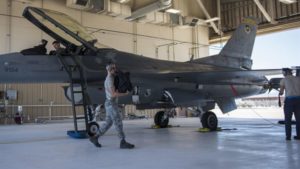
The Air Force is planning to expand the number of aircraft series integrated with artificial intelligence-powered predictive maintenance tools from four to 16 by the end of the year, a senior official said Wednesday. Lt. Gen. Robert McMurry, commander of the Air Force Life Cycle Management Center, told attendees during an online C4ISRNET conference, the push for broader AI integration beyond maintenance tools will require greater confidence in testing and security of new algorithms and proven cost savings. “That’ll be…

 By
By 











